 |
|
|
|
I attended this conference in the Hilton hotel Liverpool on behalf of my branch and CWU NW H&S Forum. It was organised by Morecrofts Solicitors, and featured several great speakers. It was very informative, and I hope the information is useful to readers and those who may be suffering domestic violence themselves. Charlotte Stenhouse, Torus Housing and Abuse Domestic spoke on their insight into housing structure and how it impinges on domestic abuse and the way in which they ensure their tenants are receiving support in the event they are living with domestic abuse. Torus Housing is one of the biggest providers of affordable homes in the North West. The two organisations support around 40,000 homes and over 74,000 customers in the North West. They are more than just a landlord and take care of victims of domestic abuse through their Torus Support Network. The organisation identify victims and provide links to make their homes safe and secure e.g. new locks, and security cameras as some victims do not want to move away. Signs to look for: Broken windows, kick marks, someone speaking for them when on the property. So why is housing a key element in domestic abuse cases? •Home is where perpetrators are most likely to cause harm and kill •Perpetrators use housing as a form of economic abuse and coercive control •Domestic abuse is a leading cause of homelessness amongst women • Emphasis on victim/survivors needing to leave to become safe Coercive control is a major feature of domestic abuse and locks victims into a world of anxiety, stress, fear and helplessness. This video is a pretty good portrayal of what become a live of walking on eggshells: Torus Housing say that their role as landlords is to identify victims before they reach a point of crisis. They aim to help victims within their housing estate by provide a link to domestic abuse services who can offer specialist support for their tenants who are victims of abuse and violence in their homes.
Additionally their rental terms includes a zero domestic abuse policy. They are a DAHA accreditation organisation. DAHA accreditation is the UK benchmark for how housing providers should respond to domestic abuse in the UK. You can download Charlotte Stenhouse's presentation here and via the Unionsafety E-Library here where you can find further documentation on Domestic Violence and Tech Abuse. Karen Senogles Criminal Justice Programme Manager gave her presentation entitled: Standing Together Against Domestic Abuse. She spoke about Specialist Domestic Abuse Courts and provided the statistics around domestic abuse in terms of the reporting of and prosecuting of the perpetrators of abuse and violence against women. these were first set up in 2005 following a Government initiative which set up the courts and established a National Steering Group, SDAC accreditation, and a Resource Manual. But sadly there has been a decline in the use of such courts, which has required a new and refreshed effort through Domestic Abuse Best Practice Forums (DABPF) and the use of a multi-agency strategy of partnerships which are key to their success. Some basic facts: 18% of all offences recorded by the police in the year ending March 2021 were domestic-abuse related, an increase of 6% compared to the previous year Only 21% of survivors will report to police. Of cases reported, only 33% make it to court and the national average of convictions of all incidents reported to police is 6.5% for DA (but 76% of those charged) The CPS domestic abuse-related charging rate in England and Wales decreased for the third year running to 70% in the year ending March 2021, compared with 76% in the year ending March 2018 She highlighted the fact that only 33% of cases end up in court, and that in March 2021 cases increased by 6% from the previous years.
They focus on the victims, which is a fundamental part of improving support to victims of the abuse, both physical violence and mental abuse. As a result of the work being done by these courts, they have become a fundamental part of improving support to the victims of Domestic Abuse. This also helps to ensure the safety of victims and allows for a more effective Criminal Justice System approach. Within these courts more prosecutions have resulted in lengthier sentences. Challenges are the need for more Police training and funding around domestic abuse which has helped to fund and develop a mentor court project. Good practice and a partnership approach ensure the collection of vital and important details, which in themselves can make all the difference to the domestic abuse case.
•More defendants prosecuted •More convicted •Higher proportion early guilty plea •Fewer hearings per case •Length of cases reducing •More specialist IDVA support You can download Karen Senogles' presentation here and via the Unionsafety E-Library here where you can find further documentation on Domestic Violence and Abuse. Anne Doyle from LIverpool City Council Commission and Contracts Manager for Homelessness and Domestic abuse. The Domestic Abuse bill was enacted into law on the 30th April 2021 setting out a range of reforms across criminal justice, the family courts, housing, and health. The Act sets out clear duties both for national and local government as follows: 1. A legal definition of domestic violence that acknowledges children as victims. 2. A national Domestic Abuse Commissioner who will advocate for victims / survivors and life-saving domestic violence services.
4. New safeguards for victims / survivors in family and civil courts, including a prohibition on abusers cross-examining their victims, and a prohibition on abusers interrogating their victims. 5. New criminal offences, such as coercive control after a divorce, non-fatal strangling, and threatening to reveal private sexual photographs. 6. The employment of the defence of "rough sex" by abusers is prohibited. 7. Ensure that all victims / survivors are given priority need if presenting as homeless and will be able to maintain a secure tenancy in social housing if they need to flee an abuser. 8. GPs are prohibited from charging for medical evidence of domestic violence. 9. A requirement that the government create a code of practice outlining how data is exchanged between the public services that victims / survivors report to (such as the police) and immigration enforcement. Of 14,407 reported incidents, only 10,000 actually become crimes. Domestic Abuse causes around 12% of homelessness cases, with it being shown to also be the cause of suicide and death. It is a hidden crime. Liverpool Council are working with several partnership boards providing specified functions including children's services. Further details of what the council is doing to support victims and survivors of domestic abuse can be found in Anne Doyle's presentation which can be downloaded here and via the Unionsafety E-Library here where you can find further documentation on Domestic Violence and Abuse. Emily Spurrell Merseyside Police and Crime Commissioner: Spoke of the fact that 75% of people will be victims of abuse in the workplace. 58% of victims have 3 days off a month and 2% will lose their jobs. UK loses 316,00000 in the economy . Domestic abuse costs the UK £71 billion per year. Emma Pickering Refuge on Tech Abuse Services: Refuge is an organisation acting for women and children against domestic violence. Their Tech Abuse Service has several elements: • National with 7 Tech Leads 2 Economic Leads and a Tech Abuse Manager and Deputy Manager embedded within Refuge services across the country. 105 tech champions recruited and trained and based in Refuge services in order to be the local experts. • Local tech abuse teams aim to cascade the specialist tech learning to staff across all services supporting the tech abuse learning culture at Refuge. •Internal The tech abuse lead works closely with the key worker providing expert advice on complex tech abuse cases to all the frontline specialists across the country.
•Physical •Sexual •Psychological •Emotional •Economic People Trafficking uses microchipping and in domestic abuse, the perpetrators use tracking on phones, pictures of faces on other bodies and can record without consent, with online grooming being just some of the ways used by domestic abusers on their partners. There are a number of ways in which this form of tech abuse can be facilitated by utilising the following in mobile phones: > Location settings > Linked devices > Access to accounts > Tracking applications > Spyware/Stalkerware and lastly but not least, the use of > Physical trackers Technology is the new tool of abusers as it can be done with no direct presence of the perpetrators. Emma and her organisation helps victims and aims to protect technology users from this form of domestic abuse, by teaching the victims about phone and technological security. But one area of particular concern is that of young people because of their habitual use of technology and their mobile phone usage. This brings such issues as that which used to be classed as playground bullying directly into the homes of the victims of such abuse. Some of the statistics around young people and their risk of becoming victims of technological abuse: •44% of 8-11 year olds use social media •31% of 12-15 year olds have seen worrying or nasty content online •22% of 8-15 year olds use in-game chat with people they only know through the game (Ofcom Children and Parents – Media Use and Attitudes Report 2021) •Children aged 5-16 get over 6 hours of screen time per day on average (NHS Greater Glasgow and Clyde) Emma's presentation contains details of why this is such an important issue and how parents and tech savvy young people can protect themselves from on-line abusers; with this one slide which is quite shocking:
You can download Emma Pickering's presentation here and via the Unionsafety E-Library here where you can find further documentation on Domestic Violence and Tech Abuse.
Natasha Saunders is an active campaigner and independent consultant for causes against domestic abuse after suffering eight years of sexual, mental, physical, economic and emotional abuse as well as coercive control. She is committed to raising awareness of the far reaching effects of Domestic Abuse, both on a personal level and in wider society. She is an active campaigner and independent consultant for causes against domestic abuse as well as ensuring much needed funds for this exceptional cause. Her website provides for some background detail: "Since her perpetrator was found guilty on three counts of rape and one of sexual assault by penetration in 2018, Natasha has joined forces with Refuge, a UK Charity for women and children, against domestic abuse and helped raise vital awareness as well as much needed funds for this exceptional cause. Now she is moving to help others understand, identify and grow by sharing her story as well as speak publicly at commercial events to share the story of her survival in addition to actively posting on social media to motivate and educate others. Natasha encourages anyone feeling alone to reach out either to Refuge or herself in whatever way is safest for them. Natasha played a vital part in changing the law early in 2021, alongside Refuge's #TheNakedThreat campaign they succeeded in seeing threats to share intimate images outlawed in England and Wales under the Domestic Abuse Bill and was thanks twice in one session in the House of Commons on the day of Royal Assent." You can read more about Natasha and the work she does ass an active advocate against violence and domestic abuse of women here In addition, here is a small list of website links for further information and sources of support: www.refuse.org.uk - www.natashasaunders.co.uk - Torus Liverpool Mutual Home - www.merseyside.police.uk
|


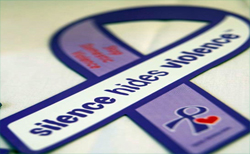 Here she reports on one the most urgent issues we are facing in society, and one which too often leads to women's co-erced suicide and the murder of women - domestic violence and abuse:
Here she reports on one the most urgent issues we are facing in society, and one which too often leads to women's co-erced suicide and the murder of women - domestic violence and abuse: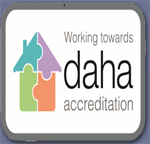
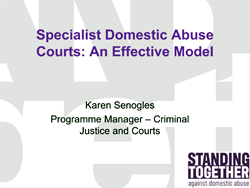
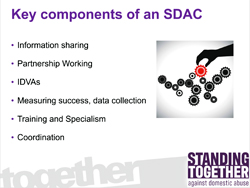 Local statistics have shown the success of the SDA regime:
Local statistics have shown the success of the SDA regime: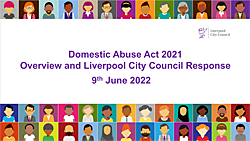
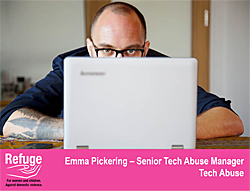
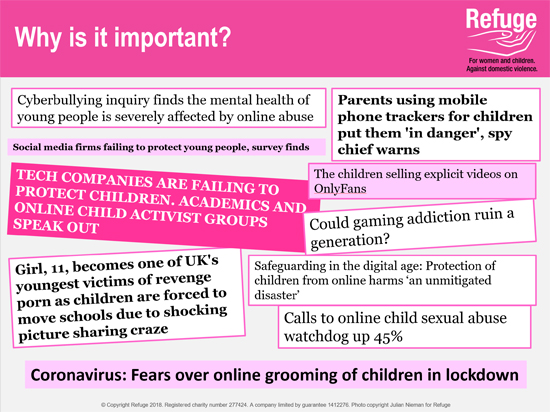
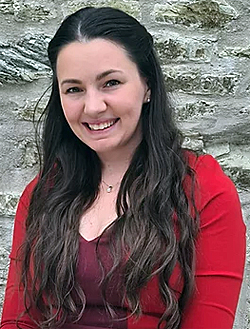 Natashia Saunders Domestic Abuse Survivor and Campaigner spoke of her experience on an eight year journey of abuse and how she turned her horrific ordeal into a positive message.
Natashia Saunders Domestic Abuse Survivor and Campaigner spoke of her experience on an eight year journey of abuse and how she turned her horrific ordeal into a positive message.